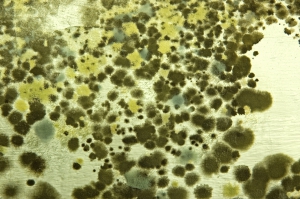How to Eliminate Mold From Every House Surface
Mold spores are everywhere around us in every type of environment. Mold is fungis and some types are extremely helpful to humanity (think of penicillin), while others can be rather hazardous to crops, breathing systems, and the stability of structures. Unsafe Mold vs. Mildew The most common kind of mold found in houses is mildew.
Mildew is a surface mold that grows in warm, moist locations like your bathroom and on materials and books kept in wet basements. Mildew begins as a gray or white grainy colony. It will turn black or brown if not removed without delay and typically appears like soil build-up. To check if the surface area is covered with mildew or just dirt, dab the stain with a cotton swab dipped in home chlorine bleach. If the stain lightens or vanishes after 2 or 3 minutes, it's mildew. If not, it's most likely simply dirt. If you find a musty smell throughout your house, then you have a high concentration of mold. It can be coming from a hinder filled with moist towels, from a damp crawlspace under https://foursquare.com/v/precision-environmental-services/5ddeba8791dc9d0007d37f0f your house, or carpets that have mold growing in the padding. It's absolutely time to take action to eliminate the issue. Now you understand that all mildew is mold but not all molds are mildew.
Mildew can discolor and gradually harm surfaces however there are far more dangerous molds that can harm the structure of your home. If you see a black or green mold that is fuzzy or slimy and the drywall or wood underneath is soft or crumbles, there is irreparable rot and the mold and the damaged surface areas should be removed immediately.
Hiring Experts If mildew infestation is caught early, you can easily handle it with home cleaners.
Caution For comprehensive mold problems, think about working with a professional. Some molds are highly hazardous and even less unsafe molds can cause issues for anyone with mold allergies or jeopardized breathing systems. The rule of thumb is if the mold covers 10 or more square feet, contact a professional. Eliminating big mold colonies needs direct exposure to heavy-duty chemicals and correct disposal of plagued building materials.
Local public health departments can provide suggestions on mold screening and refer you to an expert mold eliminator.
Products That Eliminate Mold Chlorine bleach: Sodium hypochlorite or routine home bleach works best to damage mold and get rid of any staining. It is rather extreme and need to be watered down prior to using.
Caution Caution should be utilized due to toxicity and harmful fumes and bleach needs to never be combined with ammonia.

Hydrogen peroxide: Less extreme than chlorine bleach, hydrogen peroxide (3 to 10 percent option) will eliminate mold and lighten stains. While it does have a whitening effect, it works more slowly than chlorine bleach but has no harmful fumes or residue.
Distilled white vinegar: Vinegar is acidic and gradually breaks down the structure of mold and kills it. Vinegar is non-toxic but mold discolorations might remain and additional scrubbing with a household cleaner may be needed.
Sodium bicarbonate and borax: Salt bicarbonate (baking soda) https://www.washingtonpost.com/newssearch/?query=Mold inspection and borax each have a high pH that hinders the growth and survival of mold. Both items are economical, non-toxic, and simple to mix with water. Borax will work better in getting rid of any remaining discolorations however not as efficiently as a more powerful cleaning product. When utilizing any of these items, do not rinse away the cleansing solution totally. Leaving a little bit of the cleaner will help hinder future mold development.
Elimination from Fabric If your house has actually been flooded and mold and bacteria have been left to grow for lots of days, it may be difficult to salvage material products. Nevertheless, if mildew has actually developed due to moisture and is caught early, it can easily be eliminated from the majority of fabrics. Begin by taking the items outside to brush away as much surface mold as possible and to avoid spreading out the mold spores inside your home. If the fabric is washable, utilize the hottest water recommended on the care label and add a disinfectant. If discolorations stay, produce an option of oxygen bleach and water and permit the clothing to soak for a minimum of eight hours.
Oxygen bleach can be used safely on https://local.google.com/place?id=7127076264936816522&use=srp&gl=us&hl=en any washable fabric. For materials that are dry clean just, brush away the mildew outside and after that head to a professional cleaner. Determine and explain the spots and most fabrics can be effectively restored.
Leather Shoes, Coats, Add-on, and Furnishings Mold on leather coats, shoes, bags, and furnishings must be removed outside, if possible. Clean down the surface area with a fabric dipped in distilled white vinegar and then with a good leather soap and warm water. Dry with a soft cloth and allow to air dry totally. When entirely dry, treat the item with a leather conditioner.
Books and Papers Mold will eventually destroy paper but it can be successfully gotten rid of. For costly books and traditionally substantial papers, speak with an expert curator. Never attempt to treat wet paper. The mold will smear and become almost difficult to eliminate. Allow the paper in books to air dry thoroughly in the sun or location in a sealed container with moisture absorbent product like silica gel or cornstarch sprayed between the pages. When the book is dry, head outside and use a soft paintbrush or cloth to carefully brush away the mildew from the cover and each page. Slide a sheet of waxed paper under each page to secure the page behind it. Slightly moisten a clean, soft cloth with hydrogen peroxide and carefully wipe down each page enabling it to air dry completely before moving to the next page.